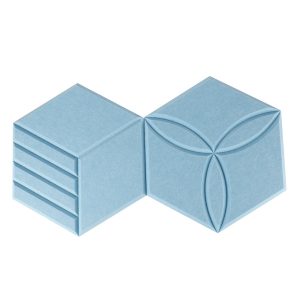Looking to take your first step into better sound management? Consider exploring more on how acoustic treatments can elevate your home studio or office space. Your work deserves the best possible environment to shine.
To achieve a peaceful environment for audio recording or office work, noise reduction is essential. External noise such as traffic, construction, and loud neighbours can interfere with your concentration and productivity.
Soundproof foam is a cost-effective solution that helps to create an acoustically controlled environment in home studios, conference rooms, and office spaces. Reducing external noise, soundproof foam ensures confidentiality, reduces distractions, and enhances the quality of recorded audio.

When it comes to soundproofing, soundproof foam offers several advantages over other materials such as carpets, curtains, or bulkier, more expensive acoustic treatments. One of the main advantages is its cost-effectiveness. Foam is generally more affordable to buy and install than other soundproofing materials, making it an excellent option for those on a budget.
Another advantage of soundproof foam is its ease of installation. It is lightweight and easy to cut into shapes, which means it can be adapted to any room or surface without professional help. This makes it a great choice for DIY enthusiasts who want to tackle their soundproofing projects on their own.
Foam is also versatile and can be used for a variety of applications, from vocal booths to podcasting stations. Its structure helps absorb sound waves effectively, minimising echo and reverberation. This makes it an excellent option for those looking to create a quieter space for recording or studying.
Overall, soundproof foam is a great choice for those looking for an affordable and effective solution to soundproofing their spaces. Its affordability, ease of installation, and effective sound absorption make it a popular choice among homeowners, podcasters, musicians, and other professionals who need a quiet space to work.
Types of Soundproof Foam
When it comes to soundproofing, not all foam is created equal. There are different types of foam that can be used to tailor your soundproofing strategy.
- Acoustic Panels: Ideal for wall and ceiling applications, these panels absorb sound reflections and are available in different sizes and thicknesses.
- Bass Traps: These are placed in corners to manage low-frequency sounds that are typically hard to control. They come in different sizes and shapes, such as wedge foam and pyramid foam.
- Diffusers: Although not foam, they complement their function by evenly scattering sound waves, reducing echoes without deadening the room too much.
It’s important to consider the NRC rating (noise reduction coefficient) of the foam, which indicates how much sound it can absorb. Other types of soundproof foam include polyurethane and melamine foam, acoustic foam panels, acoustic seals, dampening sheets, and open-cell polyurethane foam.
Installation Insights
Installing soundproof foam requires more than just sticking panels on walls. To make the most of it, start by identifying problem areas. You can use clapping or white noise to find where sound bounces back the most. Once you have identified the problem areas, focus on critical points such as the wall-facing speakers for recording setups or the area behind your desk in office spaces.
When it comes to mounting the soundproof foam, there are several options available. You can use adhesive strips, spray glue, or even mounting pins, depending on the permanency you’re after. Consider the ease of installation and how it will affect the overall appearance of the space.
Maintenance and Longevity
To ensure your soundproof foam continues to perform at its best over time, regular cleaning is key. Dust and other particles can affect the foam’s absorption capabilities. Vacuuming gently or wiping with a dry cloth can keep it in top condition. Additionally, foam absorbs not just sound but also moisture, which can lead to mould.
Keep it dry and address any room humidity issues to avoid this. Periodically check for signs of wear or damage that might affect performance. Replace any compromised pieces promptly to ensure the longevity of your soundproof foam.
Maximising Acoustic Effectiveness
To maximise the acoustic effectiveness of a soundproof foam, you should consider layering different thicknesses and types of foam. This technique can target a broader range of frequencies for more comprehensive sound control. Strategic placement of soundproof foam is also important. You should consider placing foam on doors and windows, which are common sources of sound leakage.
In addition, combining soundproof foam with other materials, such as acoustic seals and dampening sheets for doors and windows, can fortify your space against noise. By following these practices, you can improve sound clarity and reduce unwanted echoes and reverberation, resulting in a better acoustic environment.
Conclusion
A soundproof foam is an excellent solution for controlling your acoustic environment in your home studio or office space. The type of foam you choose, installation location and strategic placement are important factors to consider. Clapping or white noise can help identify problem areas where sound bounces back the most.
In addition, cover critical points such as wall-facing speakers for recording setups or the area behind your desk in the office. Soundproof foam is versatile and cost-effective, making it an ideal choice for those looking to improve their decor while controlling noise. Elevate your work environment and take the first step towards better sound management.
